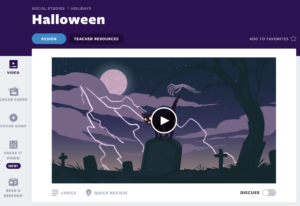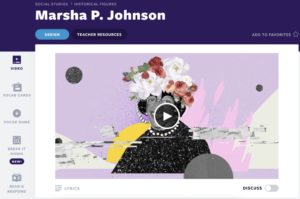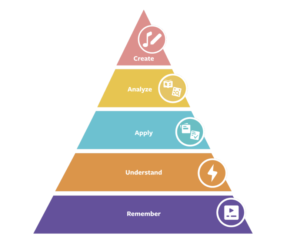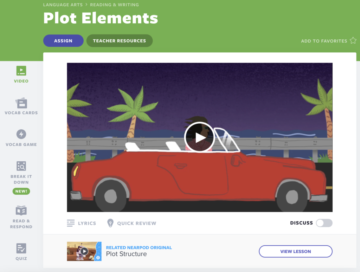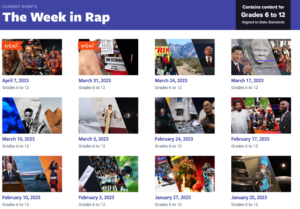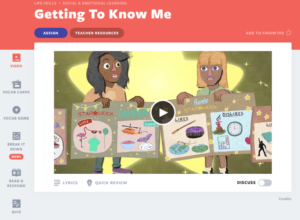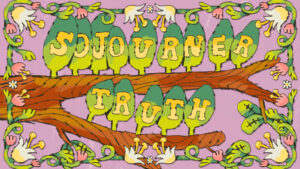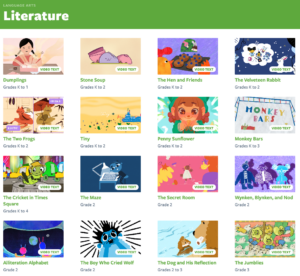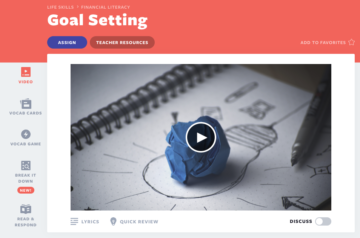From addition and subtraction to area and perimeter and linear equations, Flocabulary has resources to bring math to life.
Word problems
Word problems are a great opportunity to bring math and literacy skills together in a format that is concrete and fun. Students can use math skills they are learning and apply them by creating word problems for their peers to solve.
After watching a Flocabulary math video have students review the content and complete any supporting activities. Model for students by creating a sample word problem that utilizes the type of math operation you’re focusing on. Walk through the problem with the class, pointing out the importance of reading it carefully, understanding what you’re solving for, and underlining the most relevant information to help guide the problem-solving process. Break students into pairs and ask students to create a world problem that challenges another student to use the real-life math skill. They can be as creative as they want to be, but lay down any processes you feel are necessary like how long they have to be, how many steps to include, and maximum or minimum number values to use. After a set amount of work time, have students swap their word problems with another student, solve and review. Encourage students to use the vocabulary in the video they are watching. You can even use this lesson on word problems to help support word problem writing.

Connect math skills to real life
When math exists beyond the world of worksheets, students are able to make connections with their lives. Students can brainstorm a list of ways that math skills can be used in real life after watching a Flocabulary math video. Lead a brainstorm about the ways you could use that skill in real life. Many Flocabulary videos give you a few examples to start with. If you are teaching addition, for example, you could lead with an example about counting the total number of toys in their house by adding up how many toys each kid in the family has. If you’re covering probability, students might describe trying to figure out how likely they are to win different types of games.
Math facts challenge
With Flocabulary’s addition, subtraction, multiplication, and division videos created around the mastery of fact fluency teachers can create a math facts challenge in the classroom. Students work on the same math facts each week in class or at their own pace. Once students have achieved a certain score on each math fact number, they can move ahead to the next one.
Flocabulary’s videos for math facts progress through each level with a video and corresponding activities to practice the vocabulary and new skills. Teachers can find additional teacher resources with each video to support students as they practice and master these facts in a variety of ways.

Use videos and activities as math centers students
With Flocabulary, teachers have a flexible platform to create student-centered learning opportunities or teacher-initiated experiences. Flocabulary math videos make math instruction interesting when used as a topic spark to introduce a new math concept at the start of the lesson. When students are introduced to vocabulary prior to the lesson, their confidence rises.
Watch a video to spark interest in a new topic and use discussion mode to have the video stop at important parts to discuss new terms and ideas with students. After, teach your typical lesson however works best for you. When it’s time for students to work in class, revisit using Flocabulary activities like the Vocab Game, Quiz, Read & Respond, or Lyric Lab for student-centered activities to work on at their own pace in centers, stations, or small groups.

With Flocabulary teachers can bring literacy and vocabulary into every teaching moment.
- activities
- Additional
- AREA
- around
- BEST
- challenge
- confidence
- Connections
- content
- Creating
- Creative
- Experiences
- family
- Figure
- format
- fun
- game
- Games
- great
- guide
- House
- How
- information
- interest
- IT
- lead
- learning
- Level
- List
- Long
- math
- model
- move
- Opportunity
- platform
- Quiz
- Reading
- Resources
- review
- set
- skills
- small
- SOLVE
- start
- Student
- support
- teacher
- teachers
- Teaching
- time
- tips
- Video
- Videos
- week
- win
- Work
- works
- world
- writing

